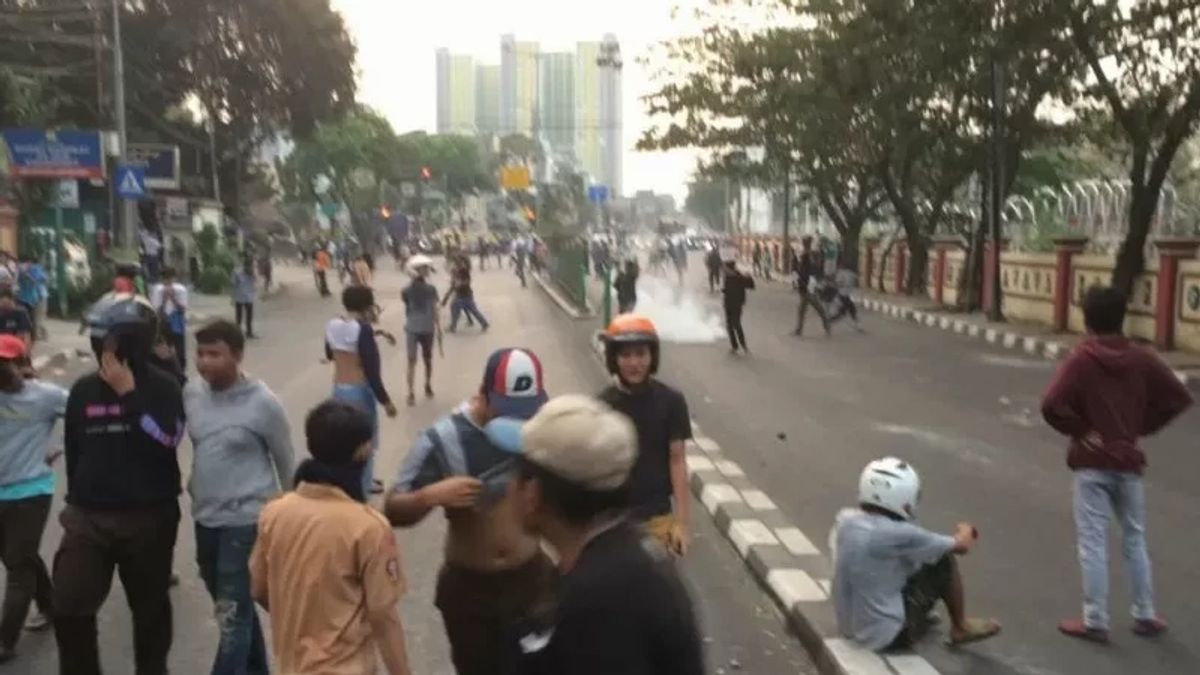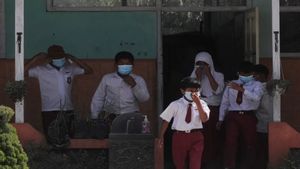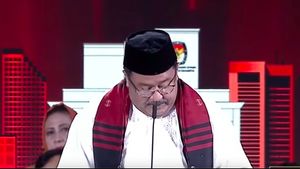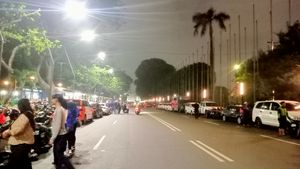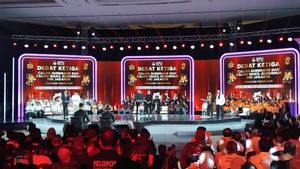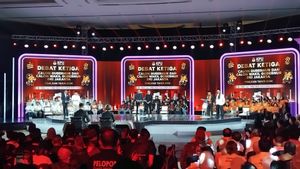JAKARTA - A resident of Tanah Abang, Ani, asked the Kapolda Metro Jaya, Inspector General Fadil, to provide facilities for a boxing competition arena in the Tanah Abang area. The hope is to prevent brawls that often occur in the area.
"In Tanah Abang, almost every night, there are brawls. Can you do boxing or boxing, like the children. It's the boxing, sir," said Ani.
Ani hopes that the Polda Metro Jaya can realize the proposal to prevent brawls from happening again in the Tanah Abang area. "It's a boxing match, sir. Instead of one against 10, it's better to have one at a time, sir. It's found that you've been battered, all of you have been battered."
Through his Instagram account, the Kapolda Metro Jaya said he would accommodate Ani's ideas. "That, those bumps? Yes, yes," said Inspector General Fadil.
Solve the problemBrawls or fights between students are a phenomenon that occurs in various regions in Indonesia. According to police records, there have been clashes with each other since 1968. In the June 29, 1968 edition of the Kompas newspaper, an article entitled "Bloody Student Conflicts" was published.
The 1968 student fight caused the then Governor of DKI Jakarta, Ali Sadikin, to give a stern warning to the students involved in the fight. Polda Metro Jaya even noted that student fights have been lively since 1984 with a total of 386 cases, then in 1999 there were 193 cases recorded with 37 deaths.
Meanwhile, in the last decade, cases of brawls have never subsided. TV One Research and Development data noted that in 2010 there were 128 cases of brawls between students.
The following year the number increased by 100 percent, reaching 330 cases with the death toll of 82 students. And in 2012, there were at least 139 brawls that killed 12 students. From these data, it can be seen that at least there are brawls from year to year.
Sonia Awalokita, in her thesis entitled Conflict Resolution of Student Brawls Between SMA Negeri 6 and SMA Negeri 70 Jakarta (2017) explained, psychologically student brawls can be classified as a form of juvenile delinquency. Theoretically, fighting can be classified into two types of delinquency -- juvenile delinquency -- namely situational and systemic delinquency.
In situational deliquency, fights occur because of situations that require them to fight. This tendency can arise due to the desire to solve problems quickly. Meanwhile, in systemic delinquency, students who engage in fights are in certain organizations or certain communities or gangs that have a number of rules, norms, or customs that their members must follow.

In fact, there have been many studies examining student brawls, especially in Jakarta. However, Sonia assessed, the inaccuracy between the problem and the results of the study made the research unable to reveal the real root of the problem.
For example, a study written by Tikka Aprilomanda in 1993. The conclusion of the study stated that there was no significant relationship between socialization in the family and the behavior of individuals involved in student brawls. He also concluded that brawls were not correlated with social interaction between peer groups.
Meanwhile, research on student fights generally sees it as juvenile delinquency, problem behavior, frustration, aggression, and there is also a juridical point of view. However, according to Sonia, from the various studies, there are several things that have not been fully disclosed.
Sonia believes that the factors that cause fights between school students that occur in Jakarta cannot be generalized. "Therefore, the solution model must also be based on the background in the school."
In her research, Sonia specifically describes the problem of brawls that occur between students of SMA Negeri 6 and SMA Negeri 70 Jakarta. According to him, the brawl that occurred between the two schools was an open conflict that had occurred decades ago.

And one of the solutions that Sonia offered in this case was the need for a conflict resolution approach. What does it mean? Conflict resolution addresses the various causes of conflict and tries to build new and lasting relationships between hostile groups.
"Conflict resolution is carried out in educational institutions by internalizing religious values into school culture through character education. As well as resocializing the perpetrators of student brawls, this is intended so that the perpetrators of student brawls do not re-engage in student brawls and build new lasting relationships between hostile groups. ."
*Read other information about RESEARCH read another interesting article from Ramdan Febrian Arifin.
Other BERNASThe English, Chinese, Japanese, Arabic, and French versions are automatically generated by the AI. So there may still be inaccuracies in translating, please always see Indonesian as our main language. (system supported by DigitalSiber.id)
